TechRadar Verdict
A retro-themed spin on instant photography that puts fun first, the Mini Evo is our favorite hybrid instant camera so far. It's far more pocketable than Fuji's other Instax cameras, with autofocus, auto exposure and auto shutter speed making it more point-and-shoot friendly to boot. The digital-first approach and lack of optical viewfinder might put off fans of true analogue photography, and the low resolution means it won't replace even a basic digital camera. But the Mini Evo's ability to double as a printer for your smartphone is slick, and its numerous built-in effects and filters are a neat way to experiment without wasting film.
Pros
- +
Extensive and fun image effects
- +
Attractive, retro-inspired styling
- +
Bluetooth printing of smartphone photos
Cons
- -
Digital image quality is poor
- -
Portrait-only user interface
- -
Have to print photos before sharing to a smartphone
Why you can trust TechRadar
Two-minute review
The Fujifilm Instax Mini Evo is our favorite hybrid instant camera so far. Hybrid instant models blend digital photography and instant film in a single device, making them an ideal starting point for anyone who's unfamiliar with the medium. While they aren't a new concept, Fujifilm's latest effort is one of the first to properly embrace the analogue format's roots.
The Instax Mini Evo is a love letter to Fuji's 1970s heyday, with a retro-inspired design and abundance of easy-to-use filters and effects designed to mimic analogue film. It easily meets the criteria to make our list of best instant cameras. But is it predominantly an instant camera, or simply a digital one with a built-in Instax film printer?
The LCD display and microSD card slot suggest the latter, which is unlikely to impress instant photography die-hards. But when each ten-shot pack of Instax Mini film costs around $8/£8, it isn't hard to see the appeal of a camera that only prints the pictures you're happy with, instead of every time you press the shutter button. If the thought of wasting packs of film while you learn the intricacies of analogue has previously put you off instant cameras, it could be for you.
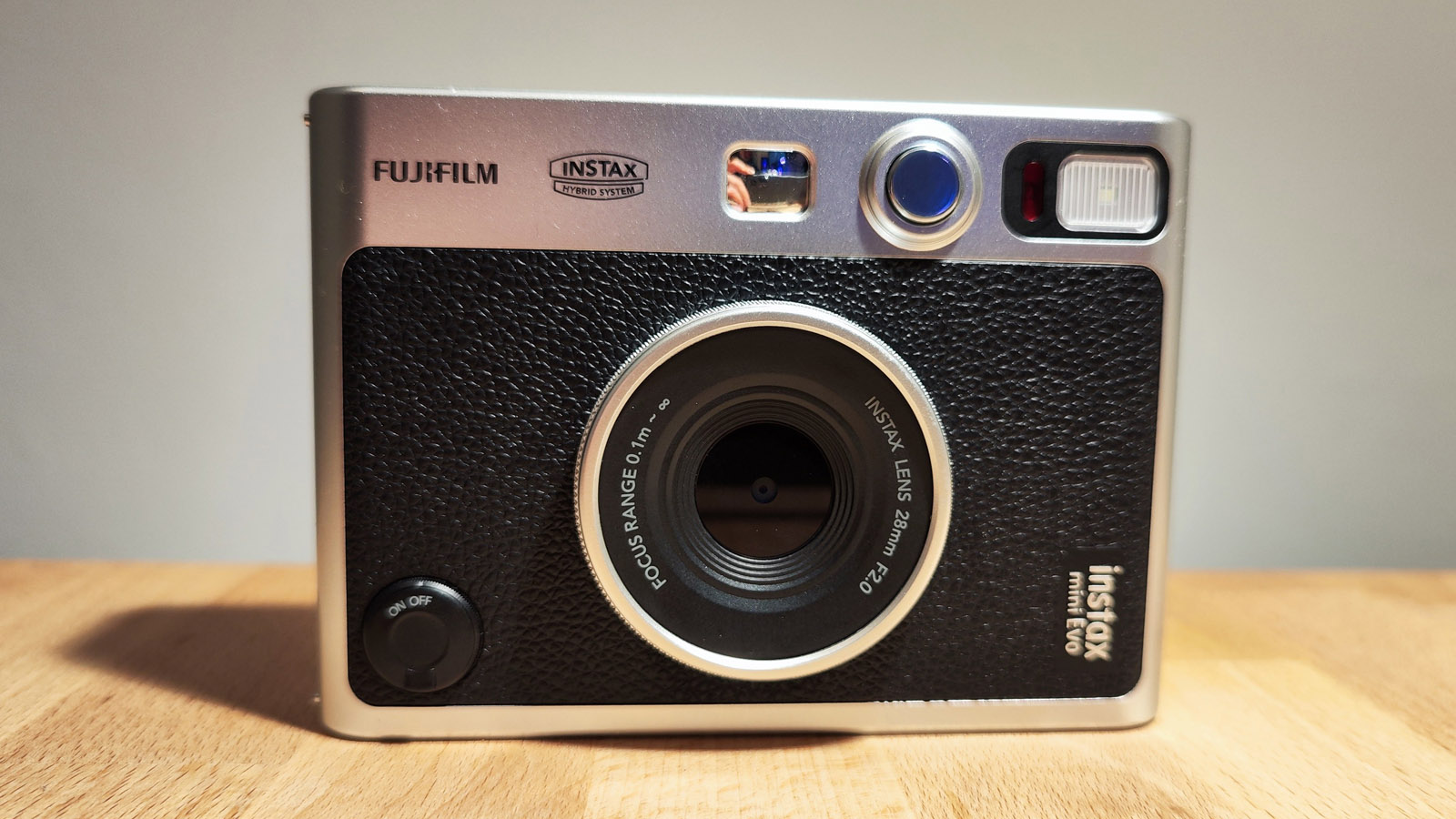
Creative newcomers to the medium will love the intuitive controls and extensive combination of picture effects available at the twist of a dial. If you prefer to only capture what the camera lens sees, though, the slightly more affordable Fuji Instax Mini LiPlay opts for a more modern appearance while retaining the shoot first, print later benefits of a hybrid.
The Instax Mini Evo's digital photos are only on par with a basic smartphone's, but you'd be hard-pressed to tell once you press print. While even having the choice means it lacks the charm of a true instant camera like the Fujifilm Instax Mini 40 (which costs half the price), the Mini Evo makes up for it with photo effects that allow for real creativity.
Though it isn't as straightforward as a point-shoot-print, the lack of buttons and intuitive interface help amateurs quickly get to grips with adding filters, snapping photos and printing their favorites. The more grown-up design should also appeal to a different audience than the similar Instax Mini LiPlay. Add in its smartphone pairing and printing abilities, and the Mini Evo is comfortably our favorite hybrid instant camera so far.
Design and features
- Vintage appearance meets modern tech
- LCD screen acts as digital viewfinder
- Intuitive controls don't overwhelm new users
With a faux leather and chrome look inspired by an old rangefinder camera, the Evo Mini is undeniably stylish. The construction is almost entirely plastic, so it doesn't feel as premium as it looks, yet is reassuringly weighty to hold.
Sign up for breaking news, reviews, opinion, top tech deals, and more.
Like the older Instax Mini LiPlay, the Mini Evo doesn't expose its film directly. By fitting a digital sensor between the lens and film, it allows for a much smaller body than a traditional instant camera. The lens only protrudes slightly from the main body, so will easily slip in and out of a bag, but only the biggest of trouser pockets will accommodate it.
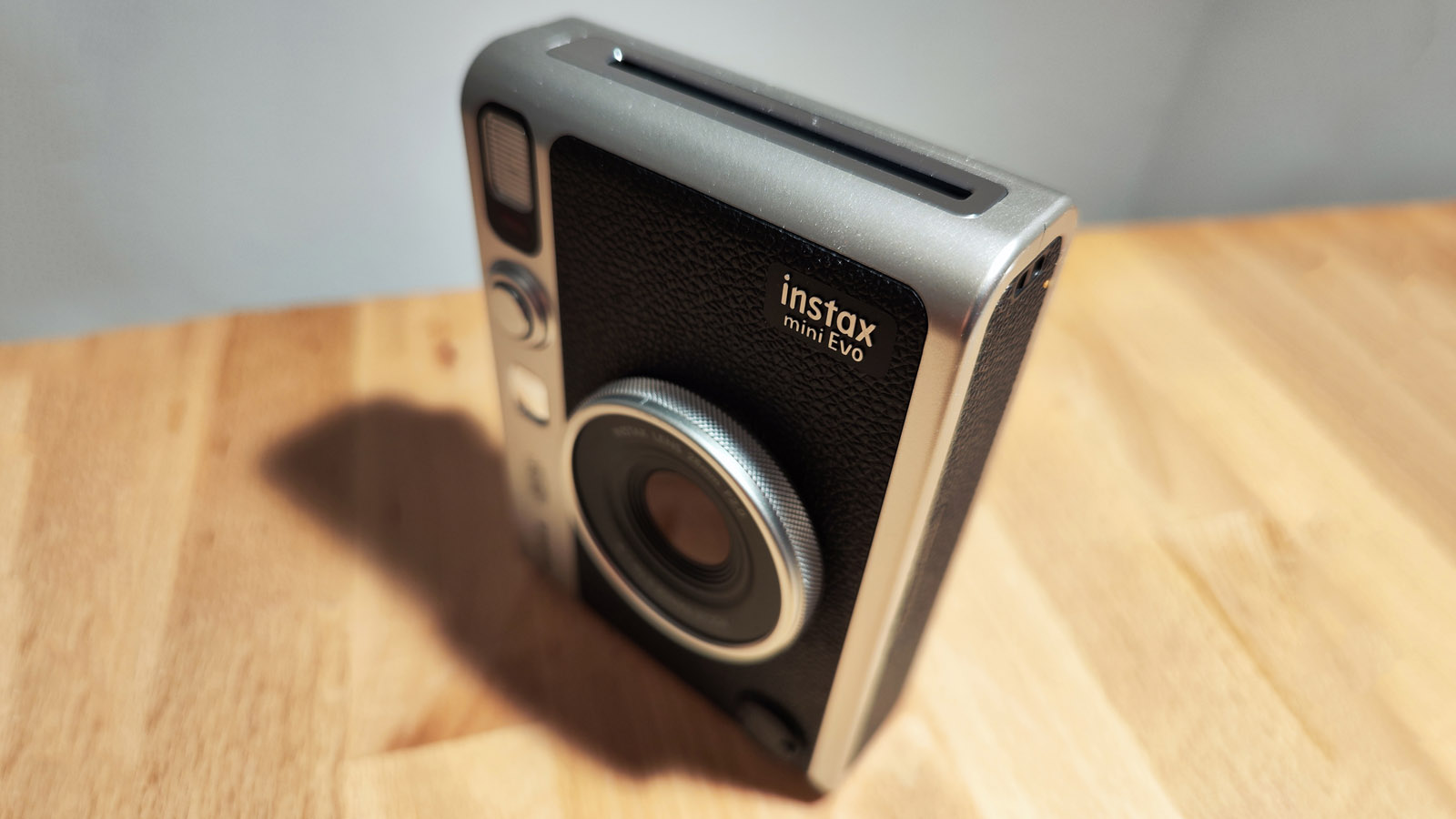
The front of the camera is rather sparse, with a power switch, shutter button and small selfie mirror surrounding the lens barrel, which can be twisted to cycle between lens modes.
Up top there's a second shutter button, settings shortcut and a mode dial dedicated to effects, as well as a cold shoe mount for fitting accessories. To print a photo, you pull a lever styled like an analogue film advance, which is a neat touch. Only a few of these buttons are labelled, though, which might leave newcomers unsure of what to press.
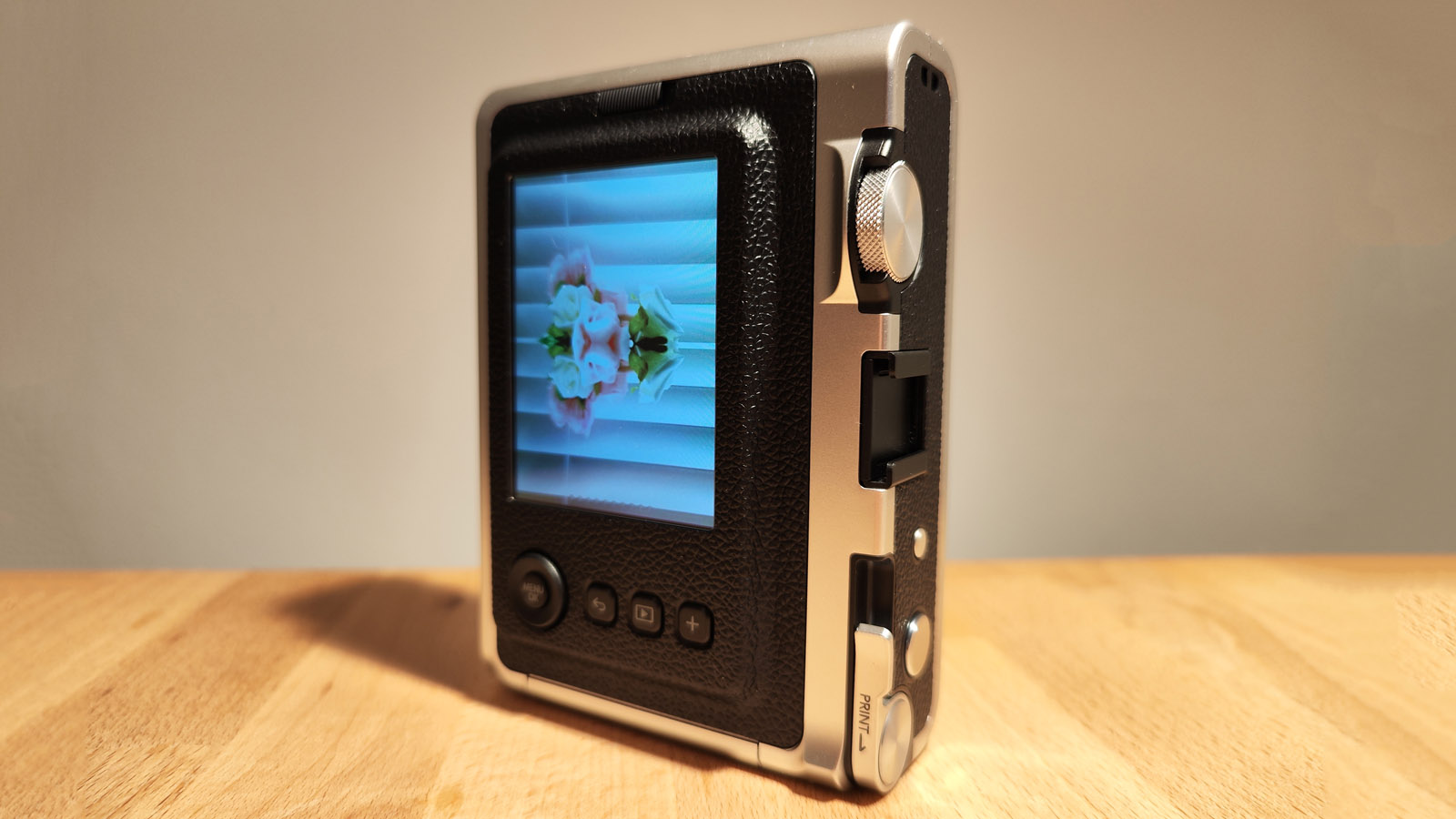
A 3in LCD display and navigation controls on the rear give away the camera's hybrid nature. They're built into the film door, which is held in place with a catch that's sturdy enough not to fly open at the slightest knock.
The built-in battery is good for up to 100 shots, and around 20 photo prints. It's charged via the microUSB port hidden on the bottom of the camera, which is where you'll also find a microSD card slot. The Mini Evo's built-in memory can hold up to 45 images before you'll need to add external storage.
Performance
- 35mm equivalent lens
- Automatic flash with manual override
- Self-timer and 100 filter/effect combinations
It may be styled as a landscape-orientation camera, but the Mini Evo's LCD user interface is locked to a portrait layout. This better fits the Instax film format, which has uneven top and bottom borders that work best with portrait images. Once you remember to hold the camera vertically, the UI is delightfully simple, although with no optical viewfinder, you may find composition becomes a challenge in bright sunlight, where the LCD becomes tricky to see.
Twisting the lens barrel or effects dial quickly rotates through the 100 different combinations, with the live view updating near-instantly. Some aren't all that impressive, like the fisheye effect that simply digitally zooms and distorts the image instead of a true ultrawide effect, but others really let you get creative. Mirror mode and dual photo, which overlays two separate exposures, are the highlights.


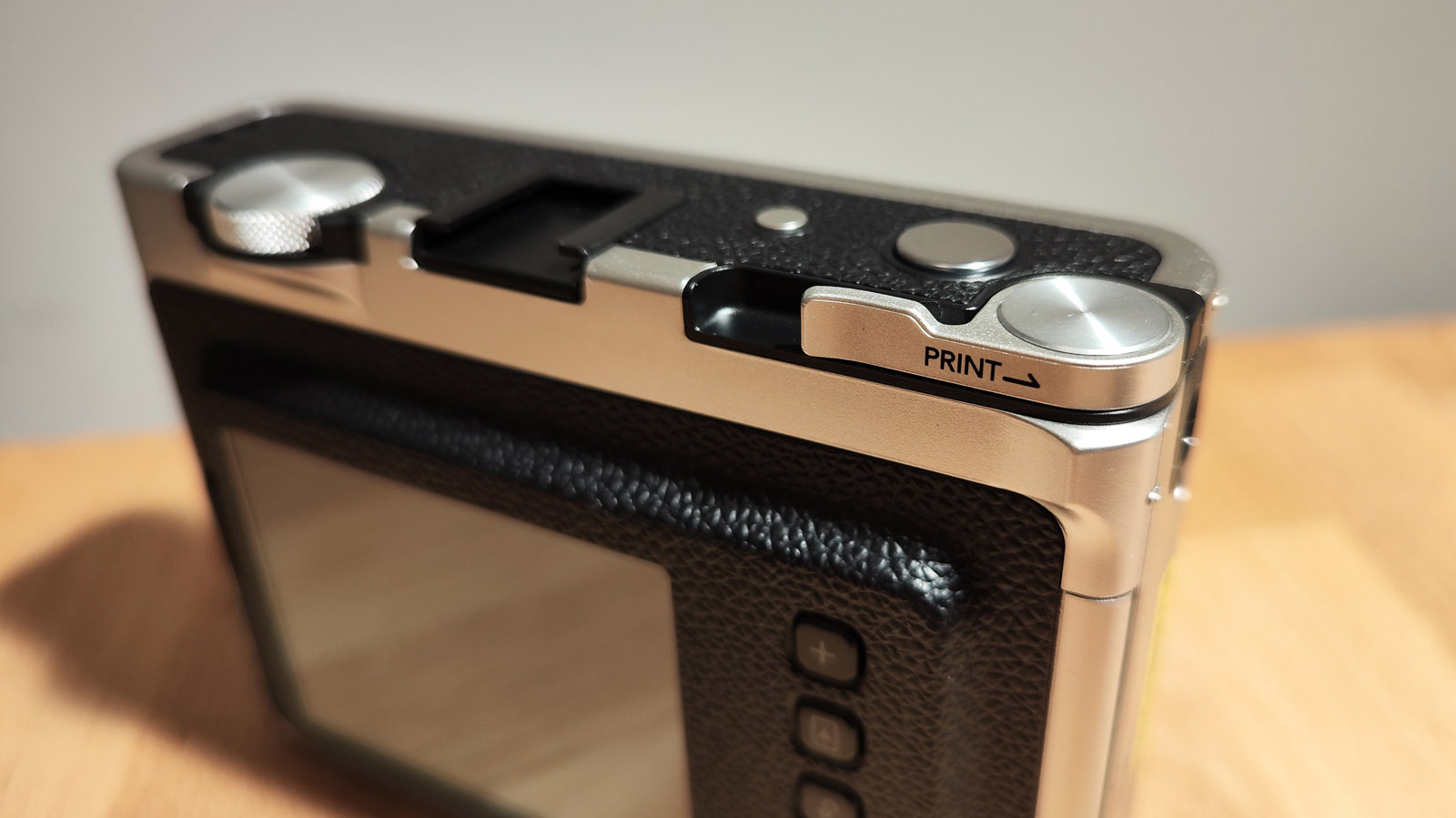
A countdown indicator near the bottom of the screen reminds you how much film is left in the camera, and thankfully won't lock you out of snapping extra digital images once the pack has been used up. Exposure and white balance are automatic, but can be customised with a few button presses. Both shutter release buttons have a half-press action to lock the centre-frame autofocus, which can be a little sluggish in dim light.
Unlike a true instant camera there's no option for point-shoot-print: every picture you take begins life as a digital image. You then decide whether it's good enough to turn into a physical photo or not. Pull the lever and an onscreen animation shows your image being sent towards the film slot, before the real thing is ejected. It takes around 15 seconds, and then a further few minutes for the image to develop.
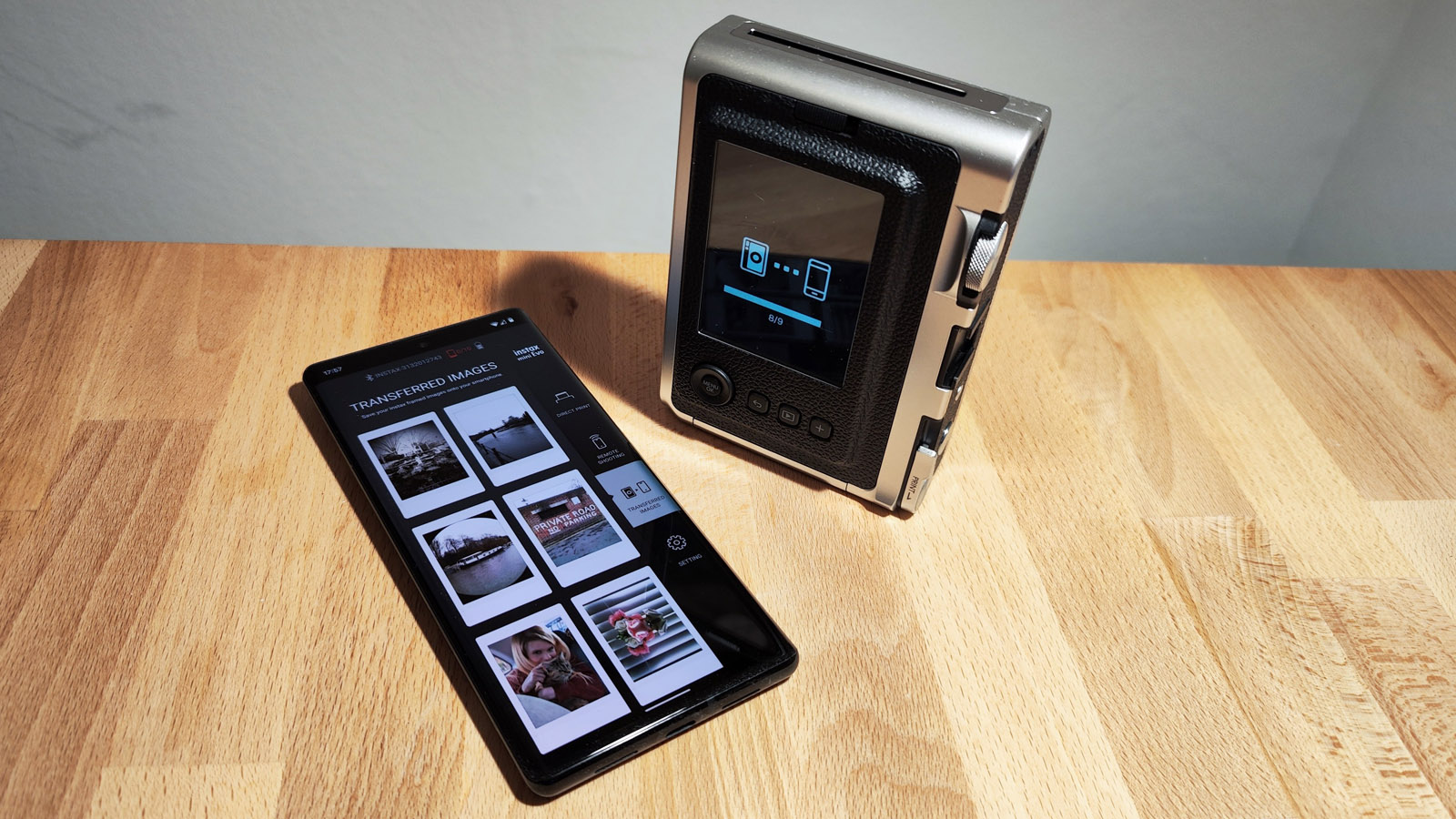
Bluetooth pairing to your smartphone is just as convenient, with Fuji's Mini Evo app finding the camera right away and putting useful functions like remote shutter (with live view), direct printing and image sharing on the homescreen. It's odd that you're only able to share pictures from camera to phone if they've been printed first, though.
Image quality
- Natural colors and contrast
- Filters and effects look convincing once printed
- Digital images lack detail, on par with a basic smartphone
With print quality set to "Instax Rich", the Mini Evo produces photos that are on par with Fuji's fully analogue instant cameras. Images sent from a smartphone for printing seem to be of a slightly lower resolution than those taken with the camera itself, but you'll only notice if you look very closely at the final photo.


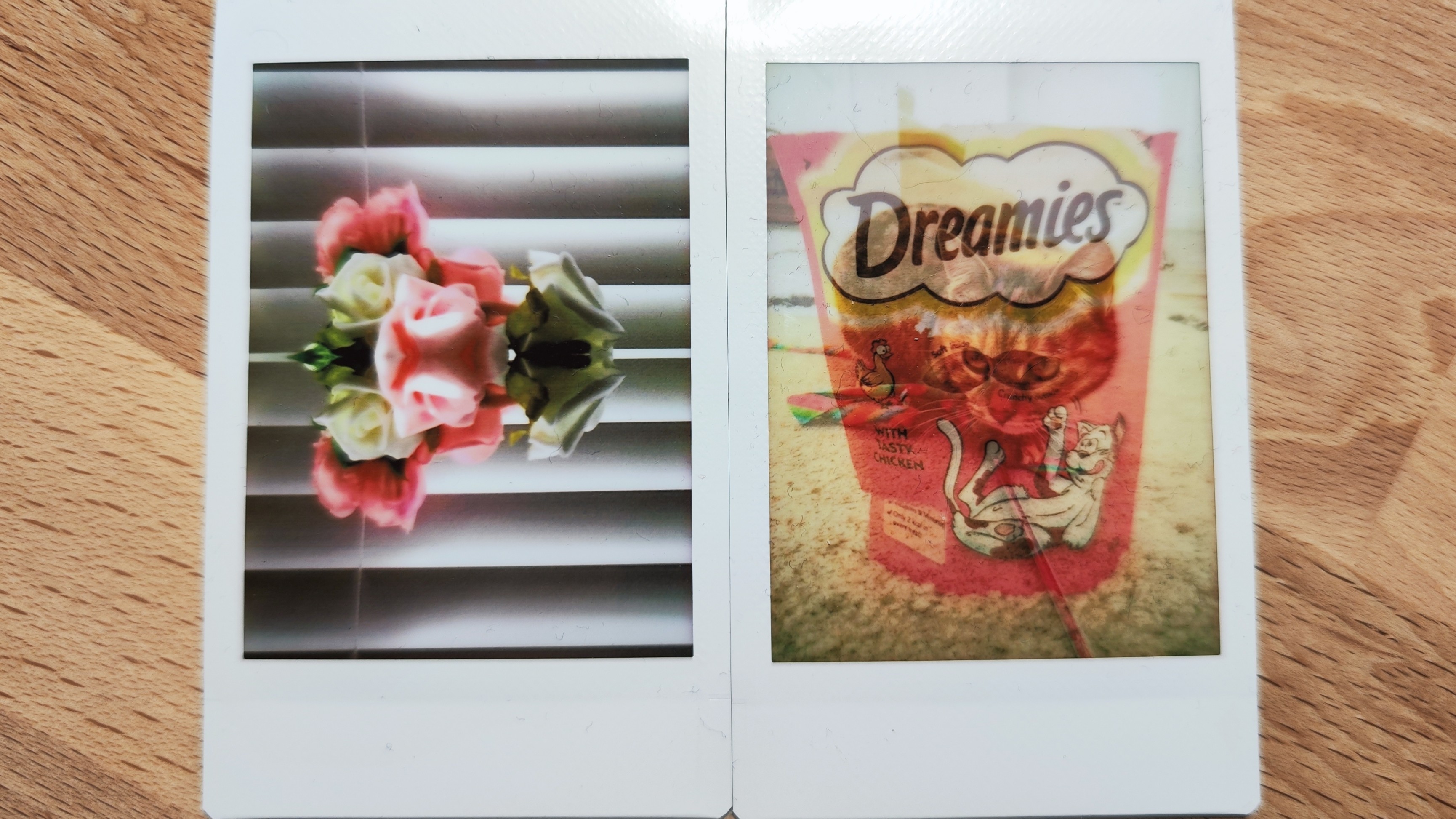

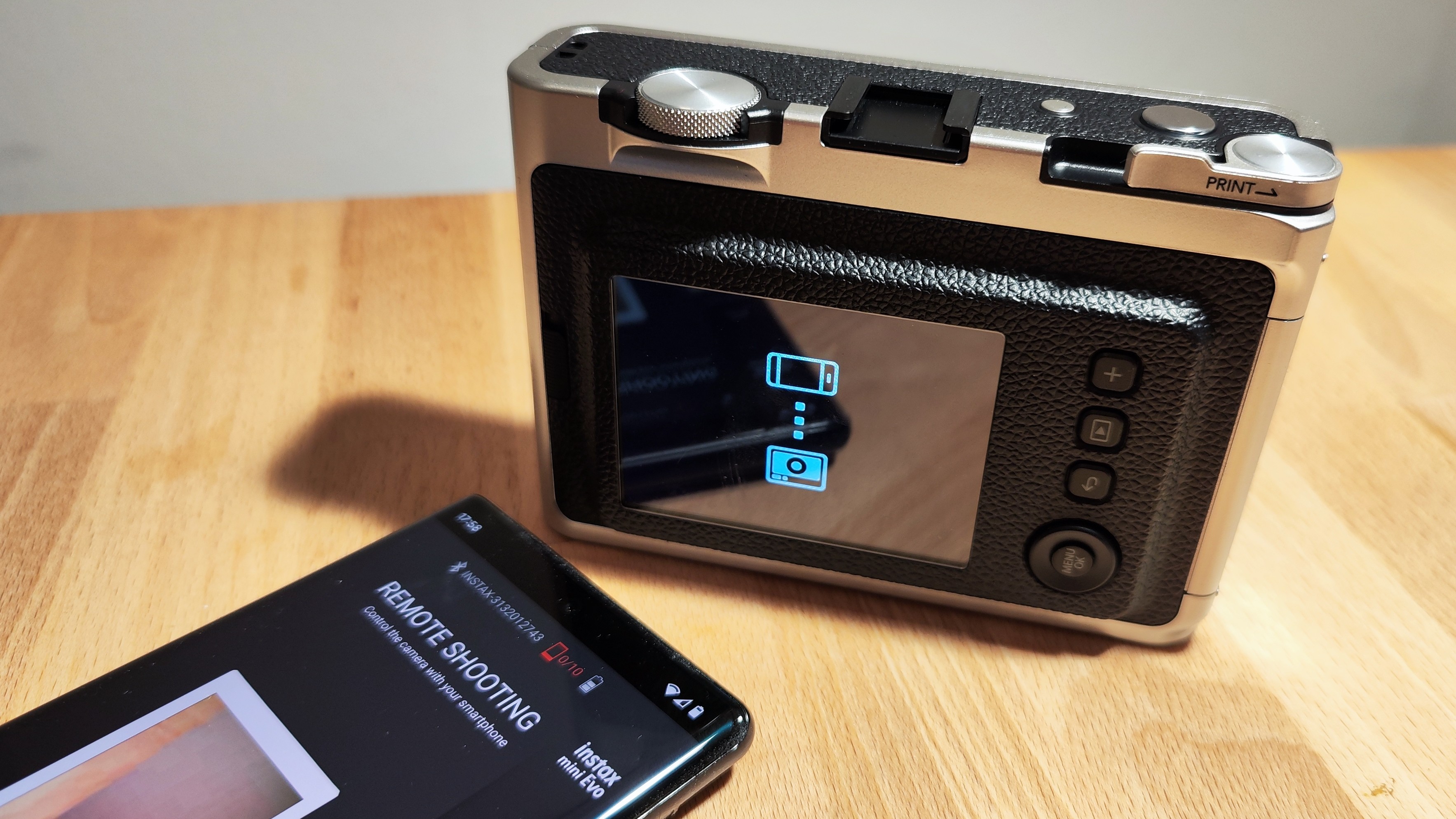
Colors and contrast are typically punchy, with dark shadows and paler highlights. Definition is sharper than rival film formats, and there's no light leakage like you'd find on a lomography-style camera - unless you've forcibly added some using the effects wheel. There's a tendency towards overexposure in bright outdoor environments, but manually lowering exposure by -2/3EV helped minimise blown highlights.
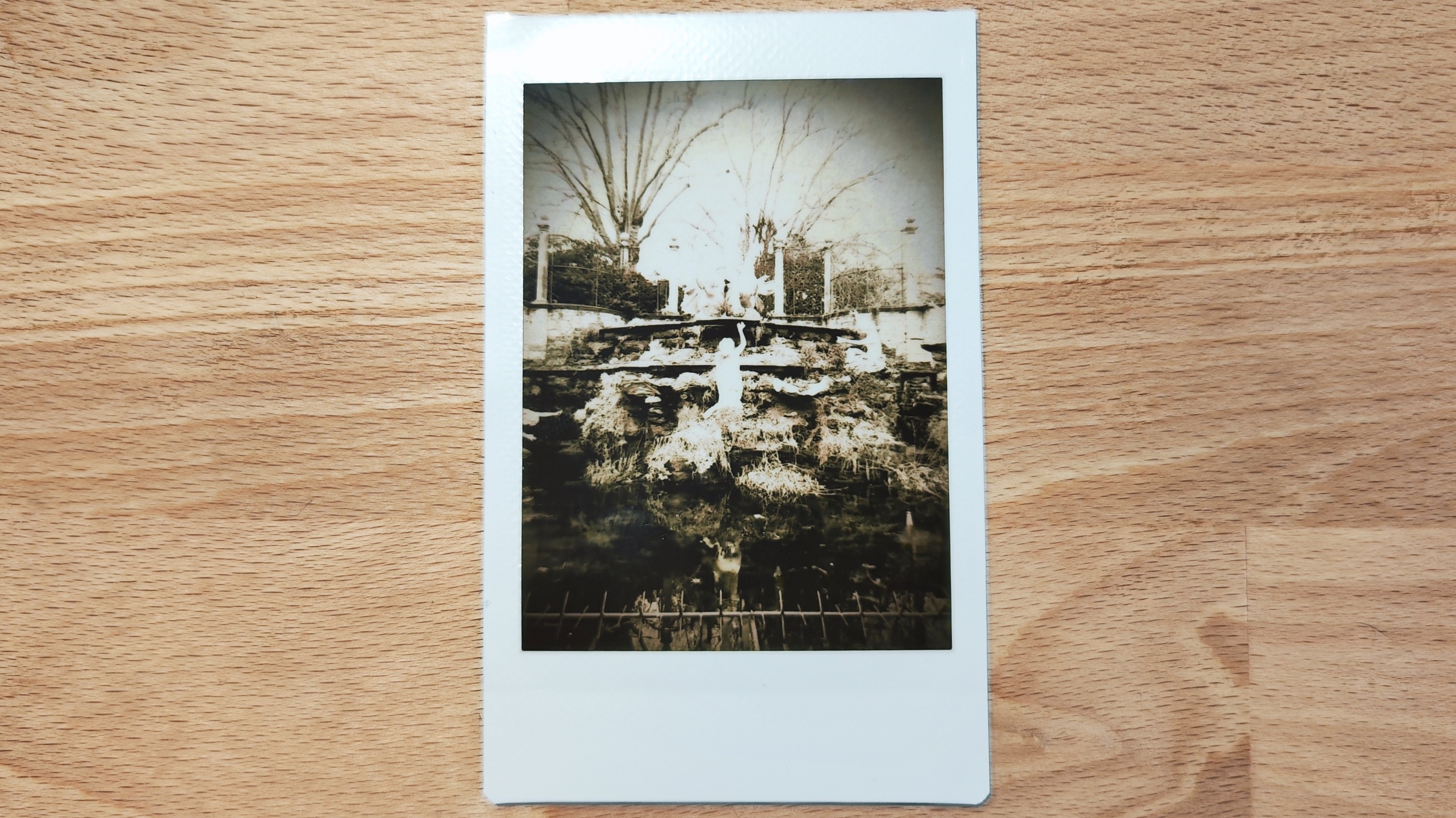
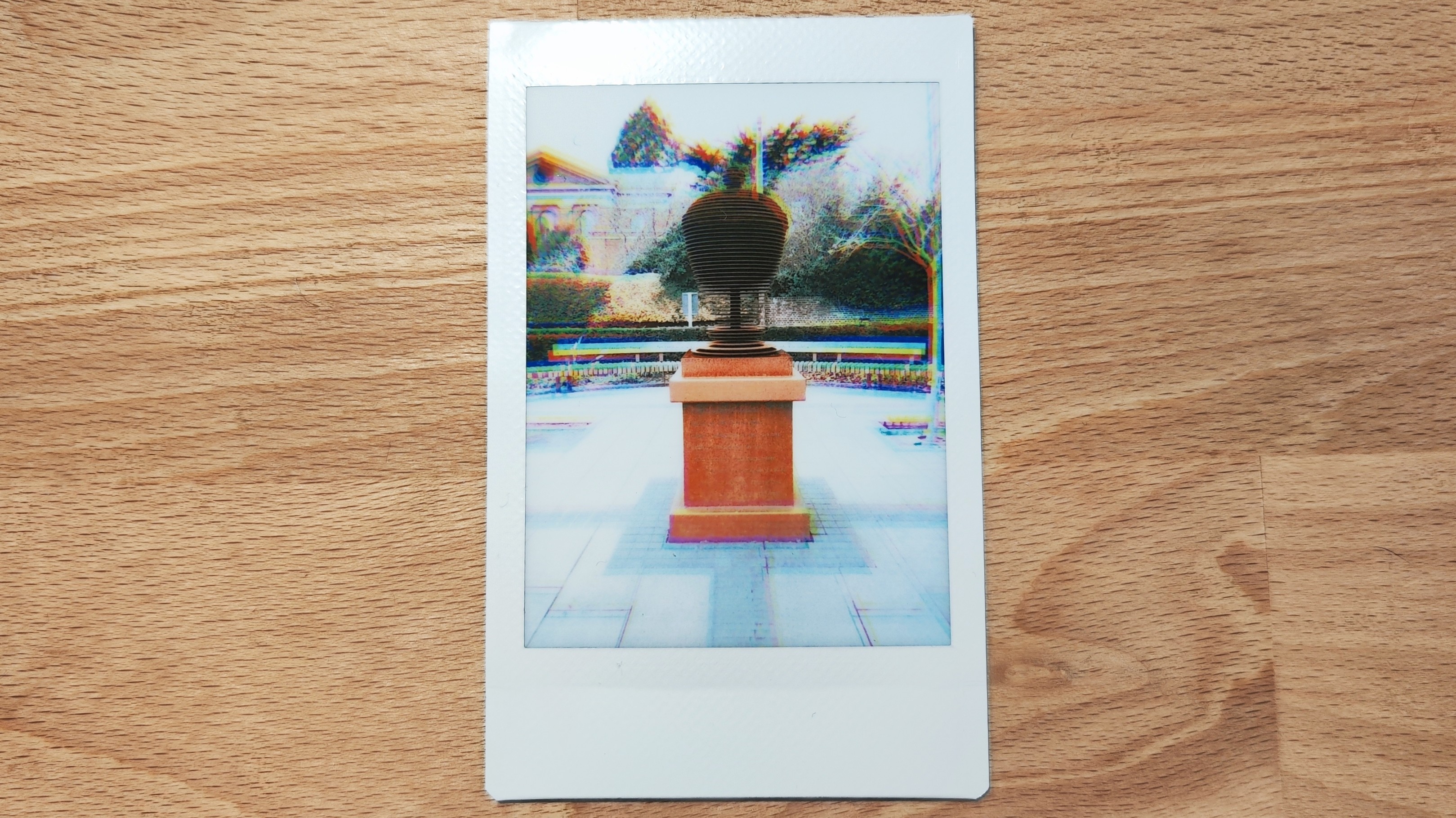

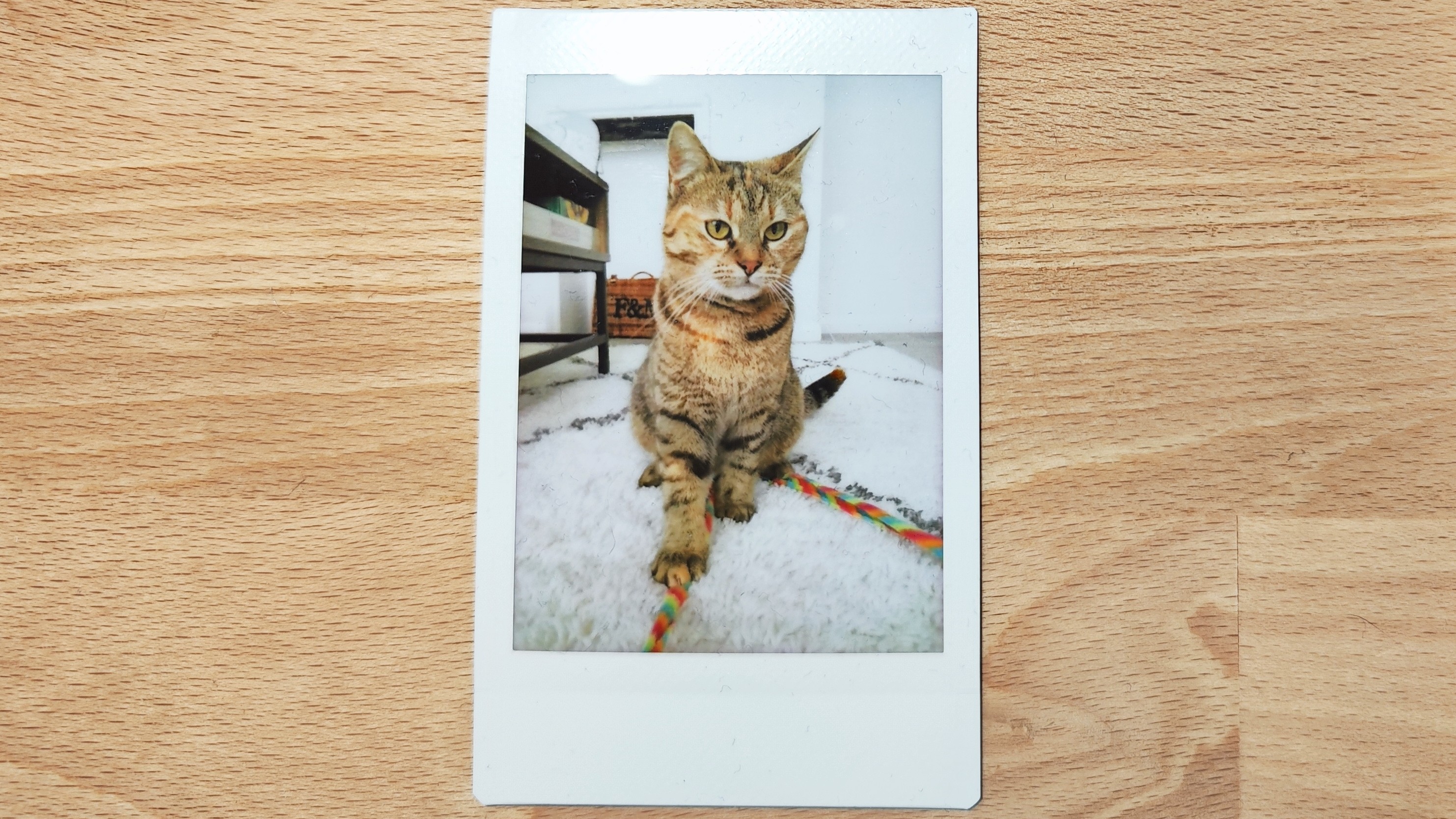
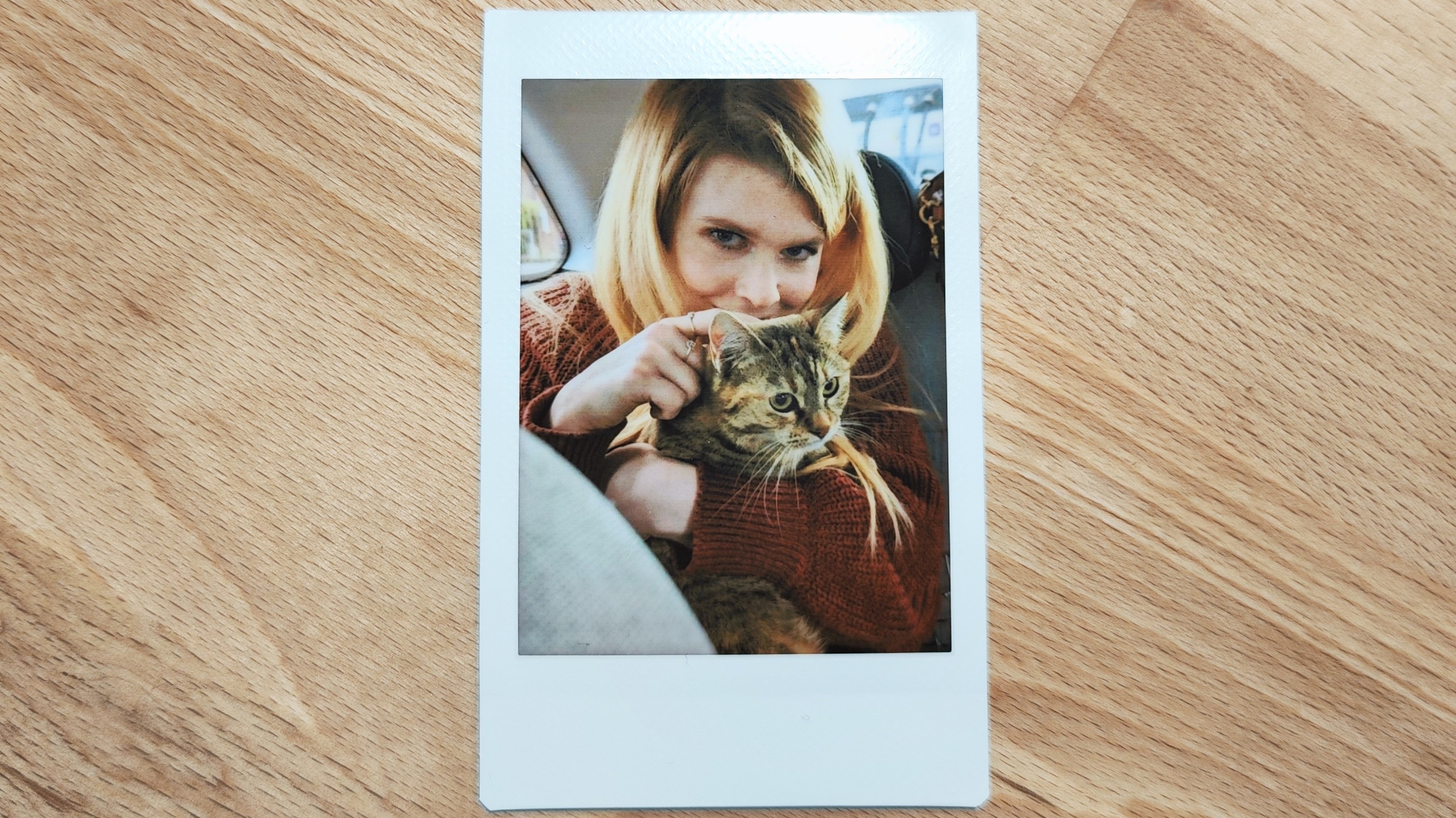
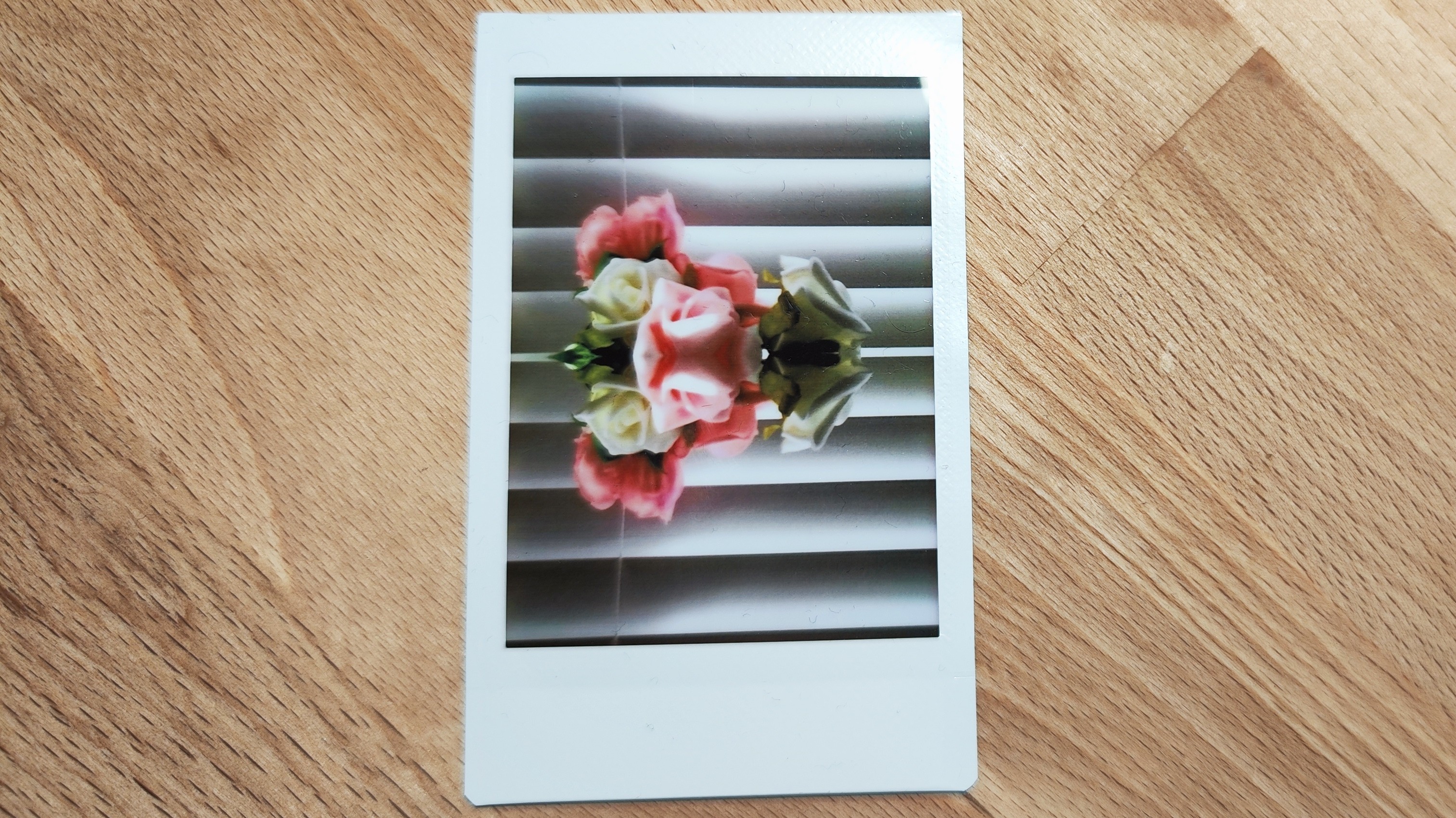
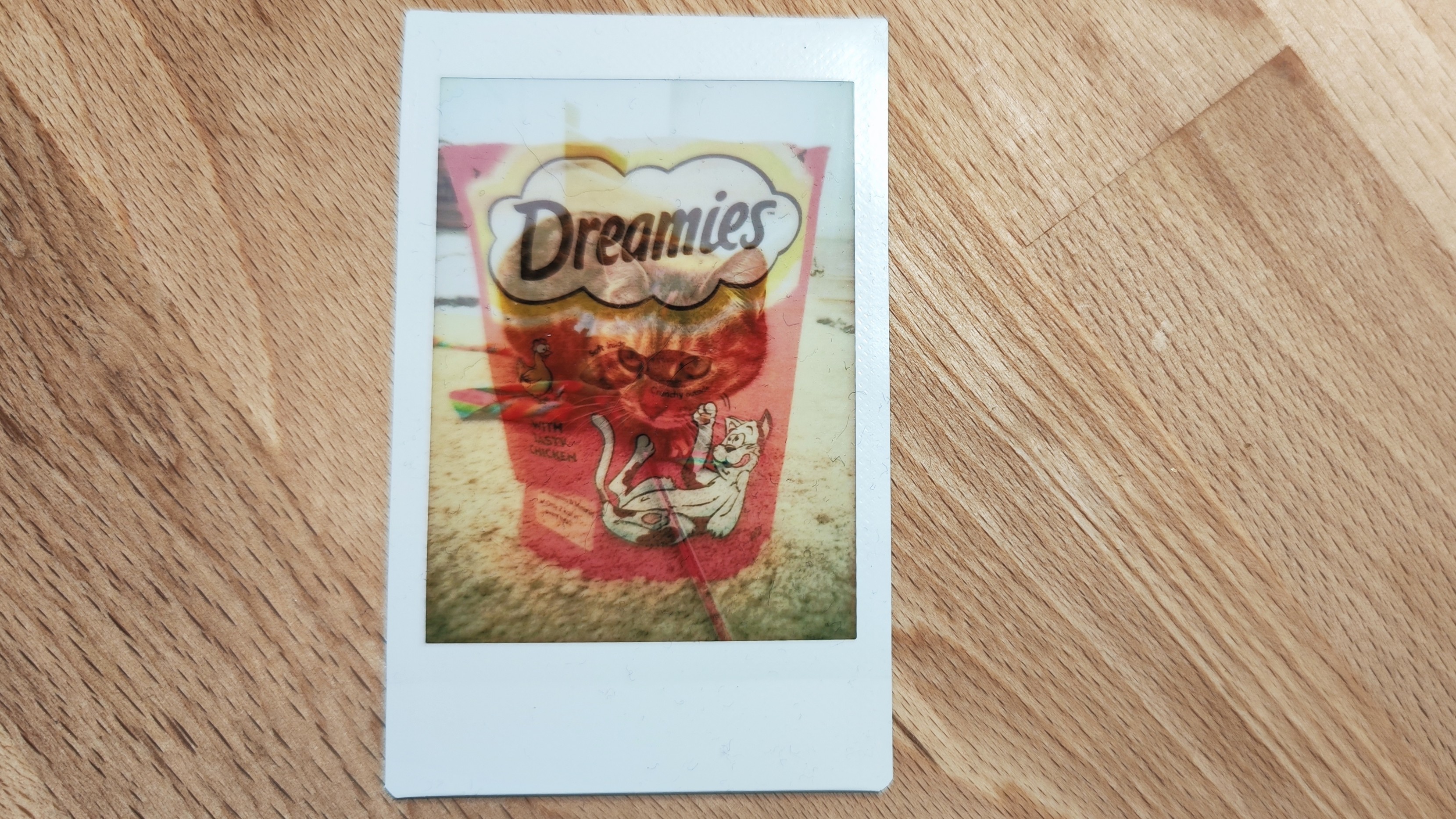

The Mini Evo's digital images aren't nearly as impressive as its printed ones, with a noticeable lack of detail and significant noise levels in darker scenes. They are arguably on par with only the most basic of modern smartphones, which to some might negate some of the appeal of a hybrid camera. Dynamic range is distinctly average, and colors aren't quite as dramatic as they appear once printed, but are largely 'good enough' for social media use.
Should I buy the Fujifilm Instax Mini Evo?
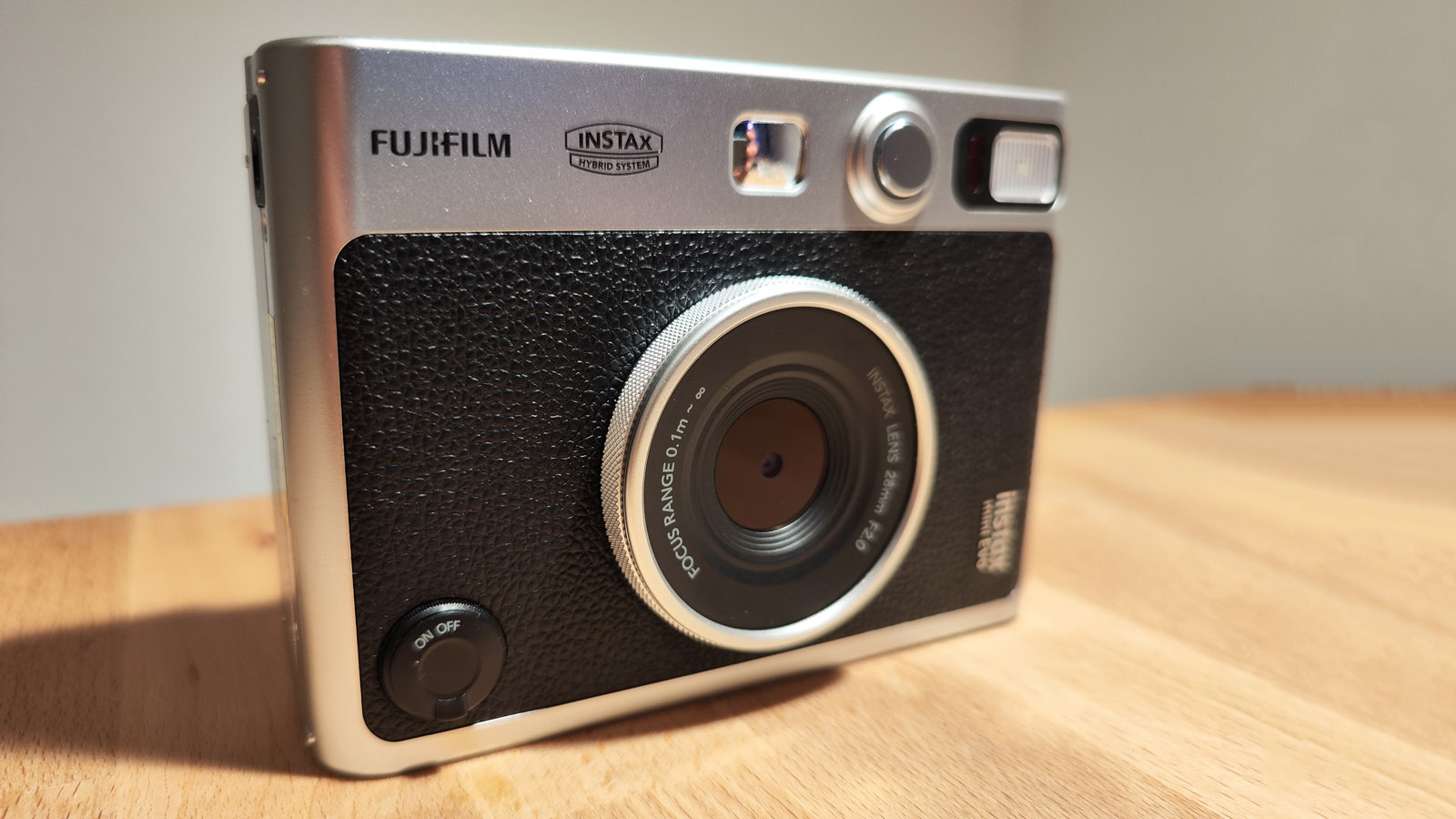
Buy it if...
Creativity is crucial
With so many filter and effect combinations, plus the ability to only print the pictures you like, the Mini Evo is the ideal instant camera for anyone looking to experiment or try out different photography styles.
Vintage looks are appealing
They carry a premium, but Fuji's latest Instax cameras have undeniably chic styling and the Mini Evo is no exception. The plastic build isn't quite as nice to touch as it is to look at, but it's certainly less toy-like than the more basic Instax Mini 11.
You want a smartphone companion
The Mini Evo is a perfectly capable standalone camera, but unlike rivals that are truly analogue, it lets you pair with your phone to double as a slick portable printer.
Don't buy it if...
Digital image quality matters to you
A modern smartphone is likely to take better quality digital images than the Mini Evo's low resolution sensor, making it more for personal snapping than social media sharing.
You're not a fan of retro chic
Fuji's own Instax Mini LiPlay hybrid instant camera looks a lot more modern, but has many of the same features as the Mini Evo – plus it's more affordable.
Simplicity is important
As easy to use as the Mini Evo is, Fuji's analogue instant cameras are even easier. The Instax Mini 40 has a similar vintage appearance, but does without any digital functions for true point-and-shoot ability. That also makes it considerably cheaper.
- Check out our guide to the world's best instant cameras
